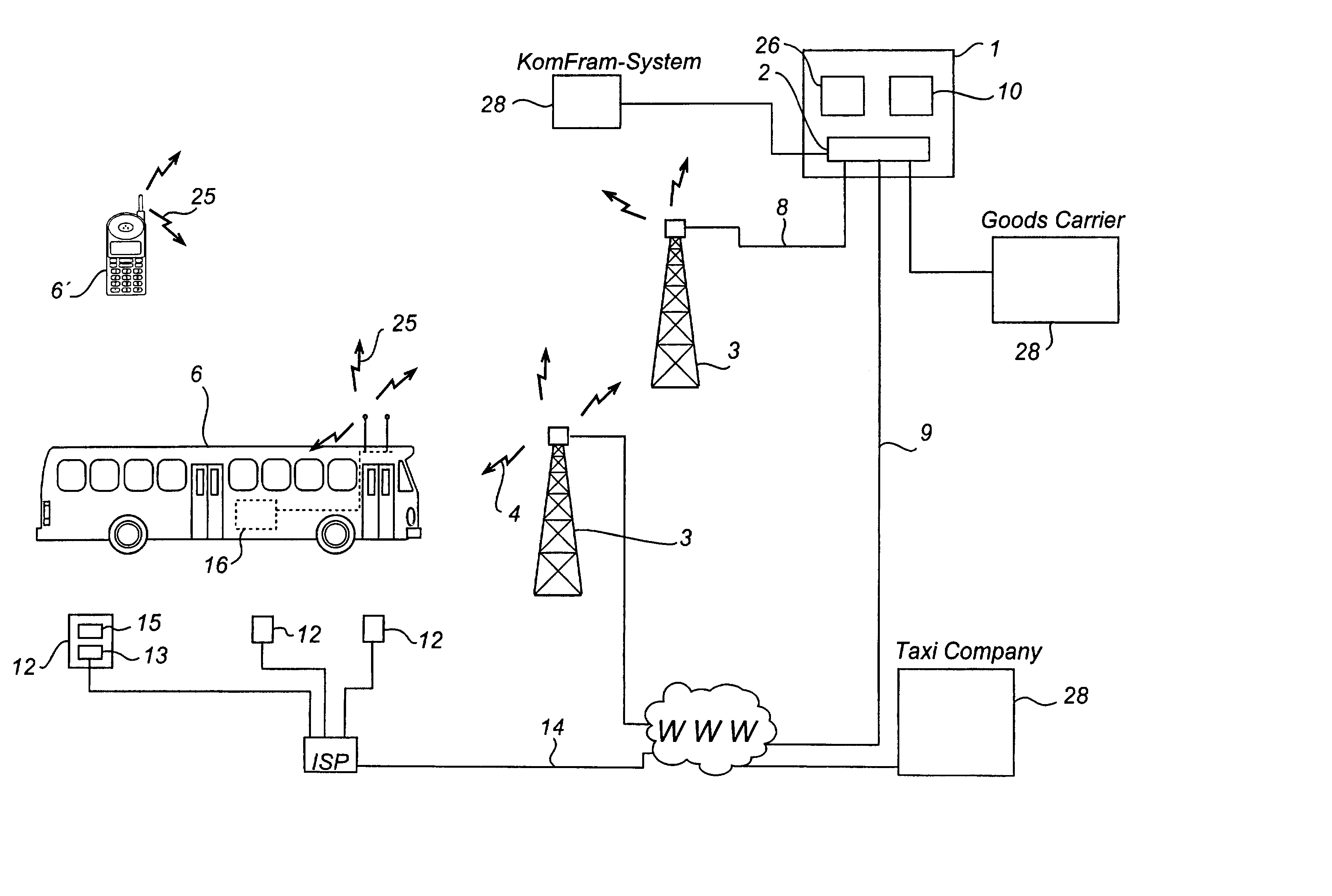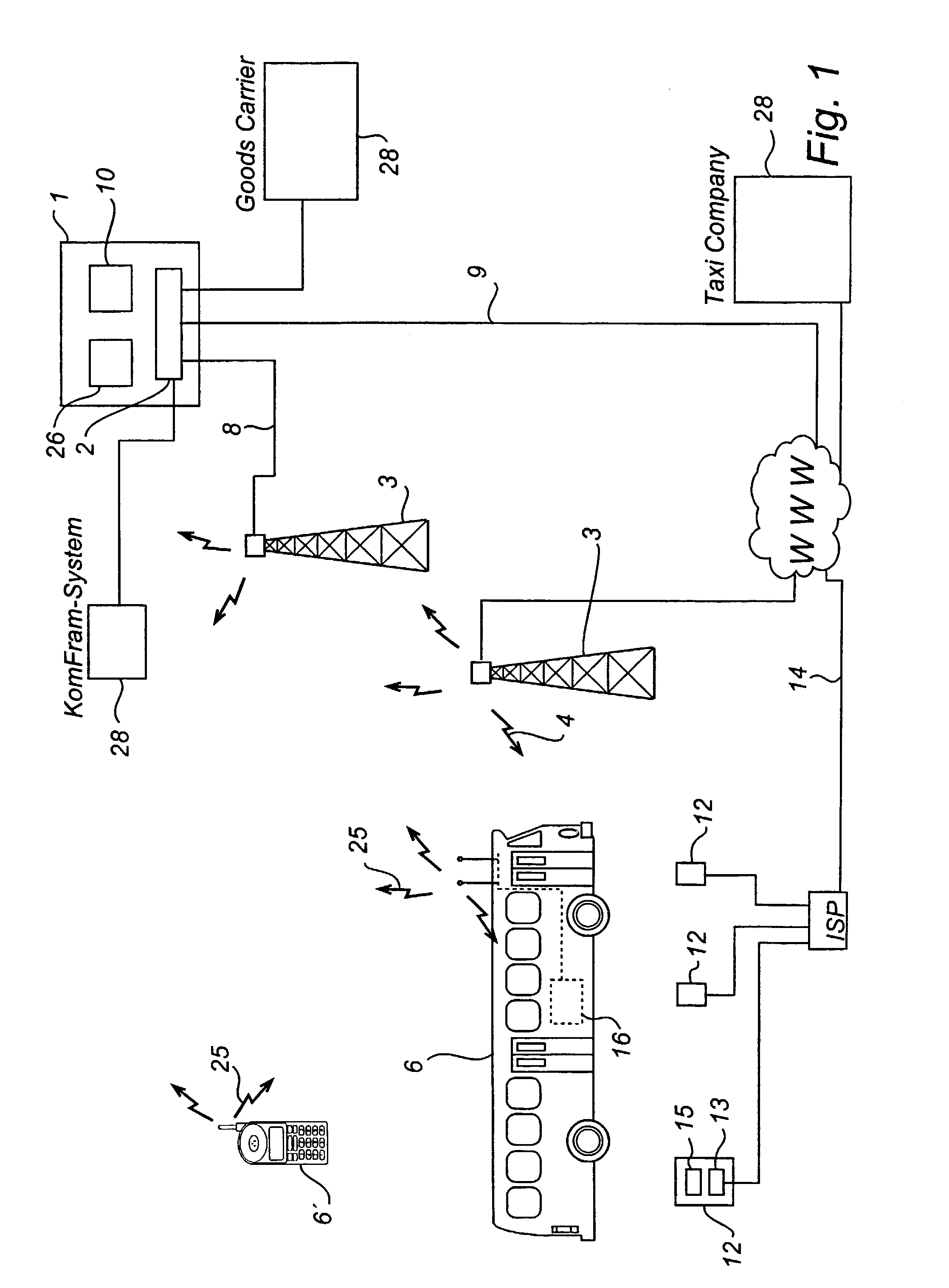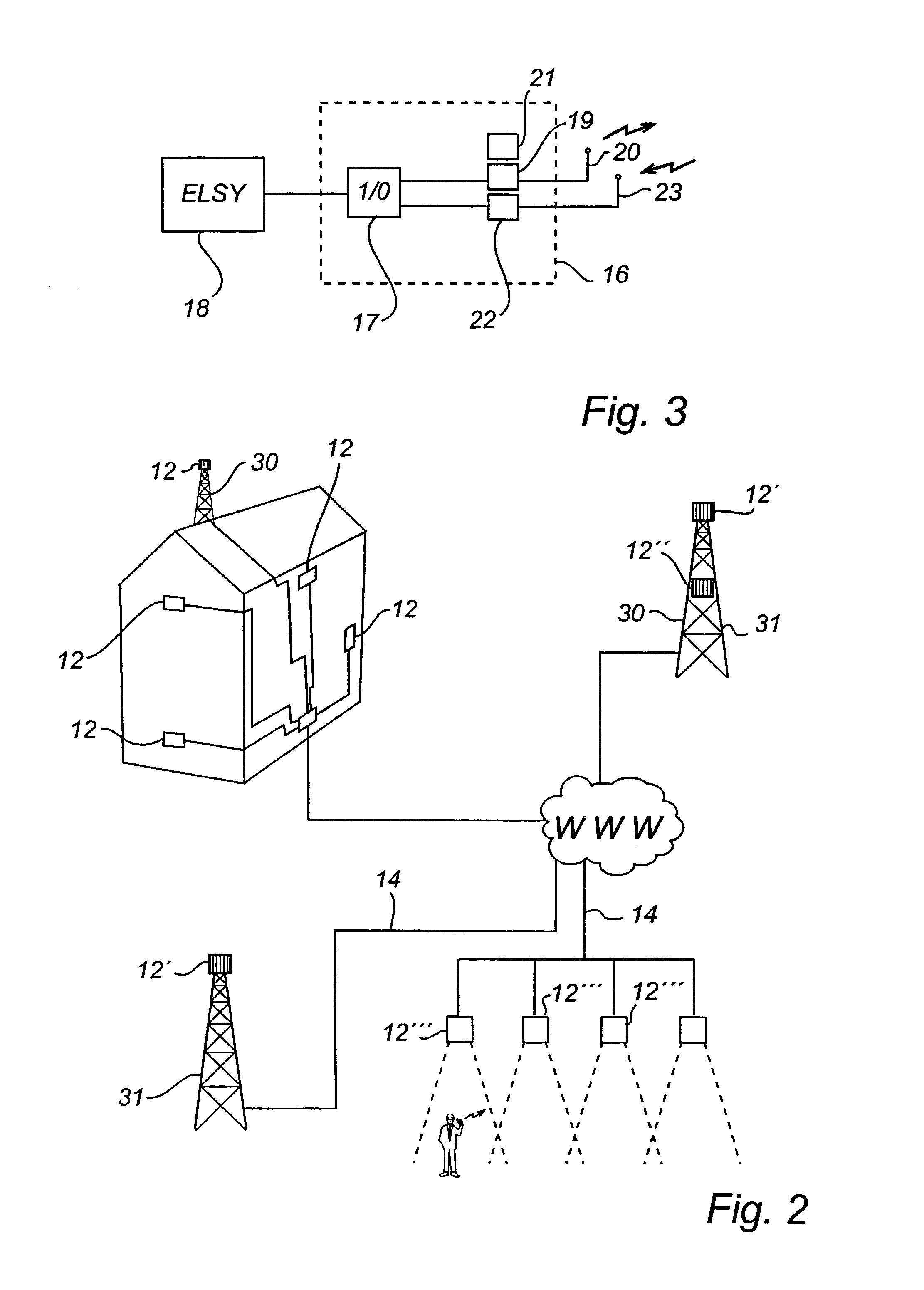Method and system for radio communication with mobile units
a radio communication and mobile unit technology, applied in the field of radio communication with mobile units, can solve the problems of inability to reach each discrete vehicle, infrequent and lapsed time before it becomes possible, and extremely time-consuming
- Summary
- Abstract
- Description
- Claims
- Application Information
AI Technical Summary
Benefits of technology
Problems solved by technology
Method used
Image
Examples
Embodiment Construction
[0035] The invention will be described in the following with reference to a system for public transportation. This is but one of several possible applications and should not be regarded as a limitation of the scope of the invention as defined in the appended claims.
[0036] The system shown in FIG. 1 comprises a central unit 1, which so to say forms the hub of the communication system. The central unit 1 comprises communication means 2 enabling it to be connected with one or several stationary transmitter units 3, which are located in e.g. radio masts 30, 31. The transmitters are arranged to transmit, on one frequency or alternatively several alternating frequencies and in different time slots, radio messages 4 over an area, such as the area surrounding a GSM mast, a town or a region (so called broadcasting). The transmission power is adapted to ensure that an emitted radio message 4 may be received by vehicles present within a predetermined area. The connection between the central un...
PUM
 Login to View More
Login to View More Abstract
Description
Claims
Application Information
 Login to View More
Login to View More - R&D
- Intellectual Property
- Life Sciences
- Materials
- Tech Scout
- Unparalleled Data Quality
- Higher Quality Content
- 60% Fewer Hallucinations
Browse by: Latest US Patents, China's latest patents, Technical Efficacy Thesaurus, Application Domain, Technology Topic, Popular Technical Reports.
© 2025 PatSnap. All rights reserved.Legal|Privacy policy|Modern Slavery Act Transparency Statement|Sitemap|About US| Contact US: help@patsnap.com



